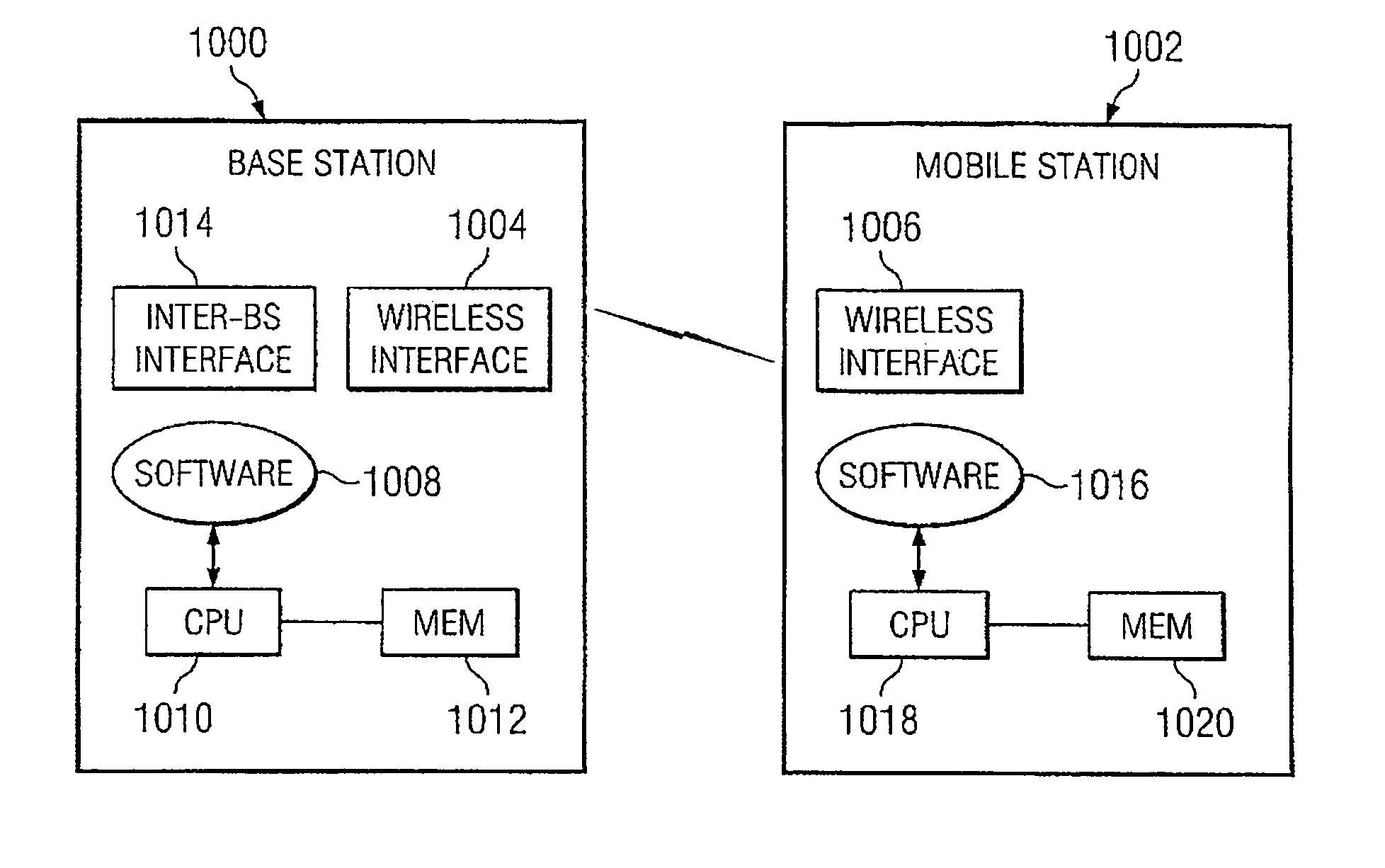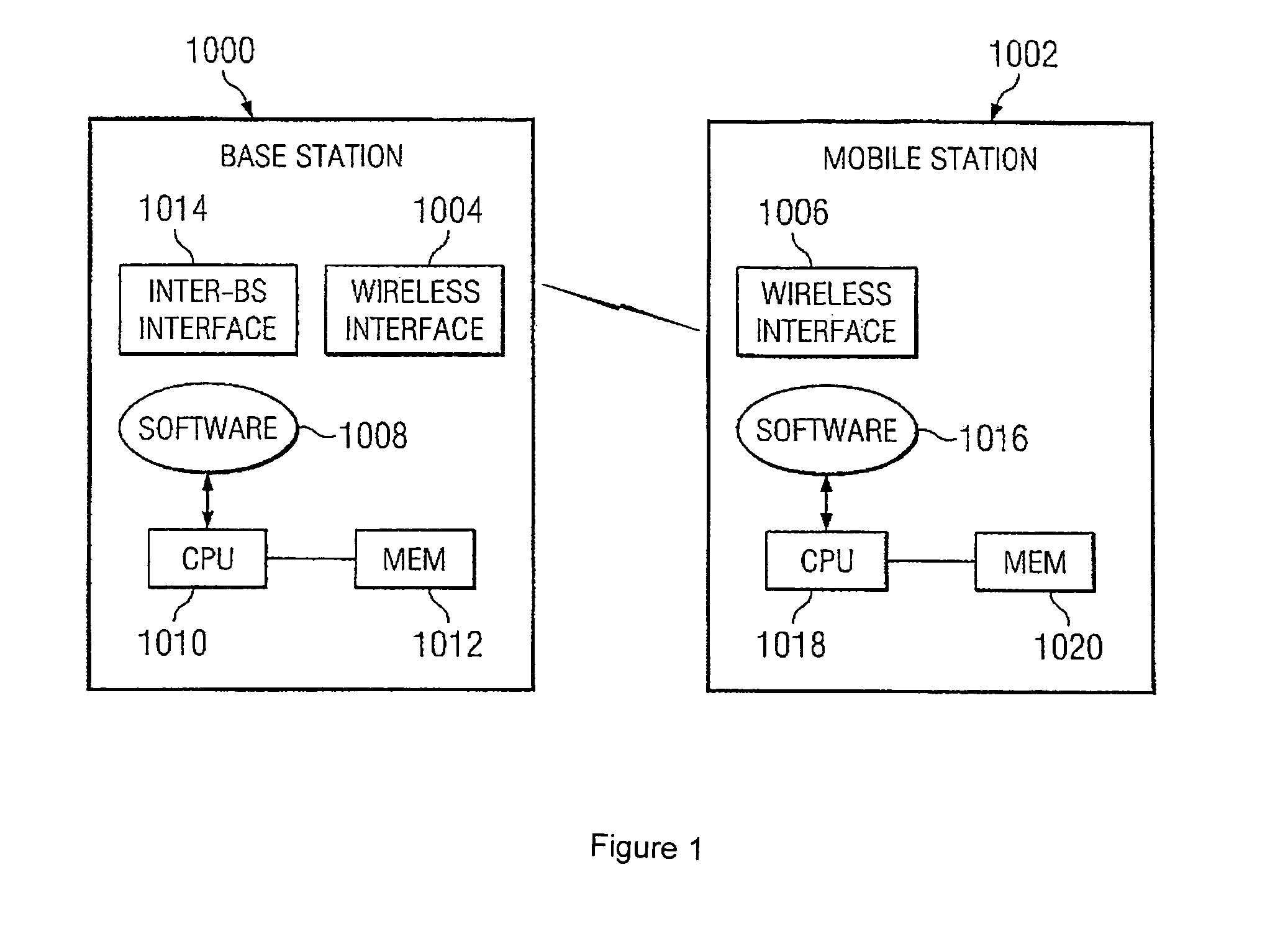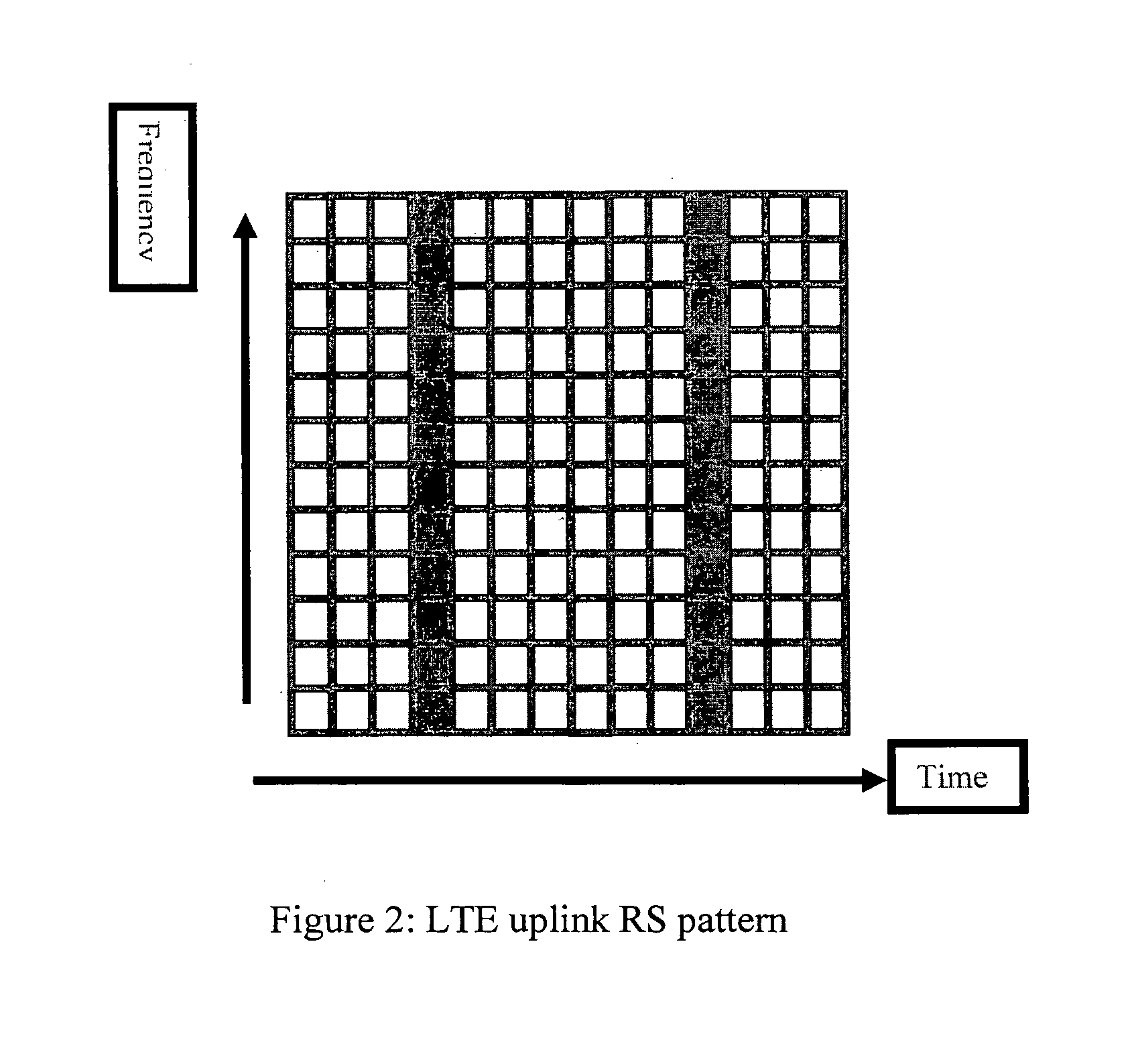Reduced Complexity Channel Estimation for Uplink Receiver
a receiver and complexity technology, applied in the field of wireless communication techniques, can solve the problems of computational intensiveness of known channel estimation equations, negative impact on system performance, and inability to reduce complexity, so as to reduce complexity and reduce implementation complexity. the effect of the minimum mean square error
- Summary
- Abstract
- Description
- Claims
- Application Information
AI Technical Summary
Benefits of technology
Problems solved by technology
Method used
Image
Examples
Embodiment Construction
[0024]Exemplary components of a system using the present invention include base station 1000 and mobile station 1002 as depicted in FIG. 1. The base station 1000 includes a wireless interface 1004 to communicate wirelessly over a wireless link with a wireless interface 1006 in the mobile station 1002. The base station 1000 includes software 1008 that is executable on one or more central processing units (CPUs) 1010 in the base station 1000 to perform tasks of the base station. The CPU(s) 1010 is (are) connected to a memory 1012. The software 1008 can include a scheduler and other software modules. The base station 1000 also includes an inter-base station interface 1014 to communicate information with another base station, such as backhaul information and / or coordination information.
[0025]Similarly, the mobile station 1002 includes software 1016 executable on one or more CPUs 1018 connected to a memory 1020. The software 1016 is executable to perform tasks of the mobile station 1002....
PUM
 Login to View More
Login to View More Abstract
Description
Claims
Application Information
 Login to View More
Login to View More - R&D
- Intellectual Property
- Life Sciences
- Materials
- Tech Scout
- Unparalleled Data Quality
- Higher Quality Content
- 60% Fewer Hallucinations
Browse by: Latest US Patents, China's latest patents, Technical Efficacy Thesaurus, Application Domain, Technology Topic, Popular Technical Reports.
© 2025 PatSnap. All rights reserved.Legal|Privacy policy|Modern Slavery Act Transparency Statement|Sitemap|About US| Contact US: help@patsnap.com



